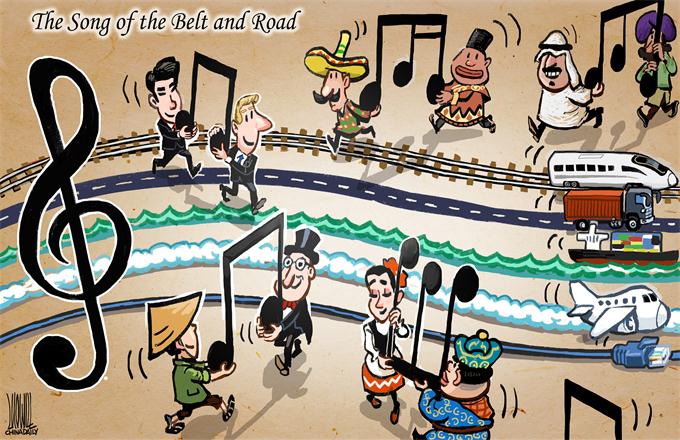Initiative provides win-win fruits for all
Radically different from Marshall Plan
 |
|
Liu Ying, research fellow at Chongyang Institute for Financial Studies, Renmin University of China |
In the more than three years since President Xi Jinping proposed the initiative, comprising the Silk Road Economic Belt and the 21st Century Maritime Silk Road, some people have misinterpreted it as China's version of the Marshall Plan. They are wrong.
After World War II, the United States used the Marshall Plan to not only rebuild Western European economies but also to expand its influence in Europe and counter the socialist camp led by the Soviet Union. However, the Belt and Road Initiative is devoid of any political overtones as its intention is not to counter any parties. Instead, it brings economies together to share the benefits of economic growth.
Under the Marshall Plan, European countries lowered their tariff barriers, and the US expanded its market share and established the hegemony of the US dollar while the Belt and Road Initiative focuses on promoting policy coordination, infrastructure connectivity and development, unimpeded trade, financial integration, and closer people-to-people ties.
China is endeavoring to foster economic growth and transform its economic development model to move toward sustainable and eco-friendly growth, and the Belt and Road Initiative is its contribution to the development of the global economy.
- Direct flights link China with 43 Belt and Road countries
- European Investment Bank pledges support for Belt and Road plan
- Belt and Road a new platform for China, Japan: Xi
- Belt and Road documentary films promoted in Guangdong
- Belt and Road Initiative boosts Africa's infrastructural connectivity
- Research on the Supporting Feasibility of Infrastructure Construction of Those Countries along the Belt and Road Routes with PPP Mode(Special Issue No. 13, 2017)
- Is Belt and Road Initiative just political rhetoric?
- US forms Belt, Road group
- US-China trade could get Belt-Road lift

















